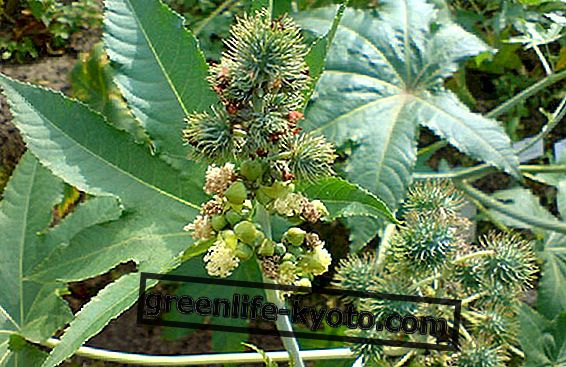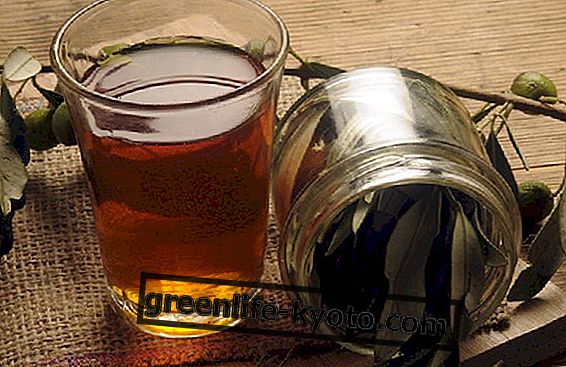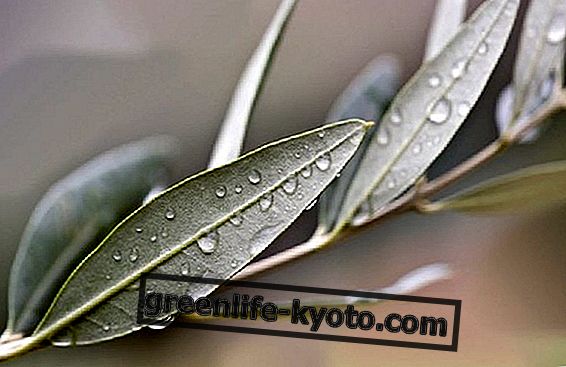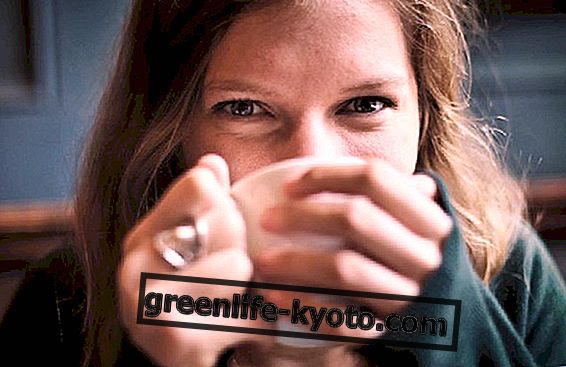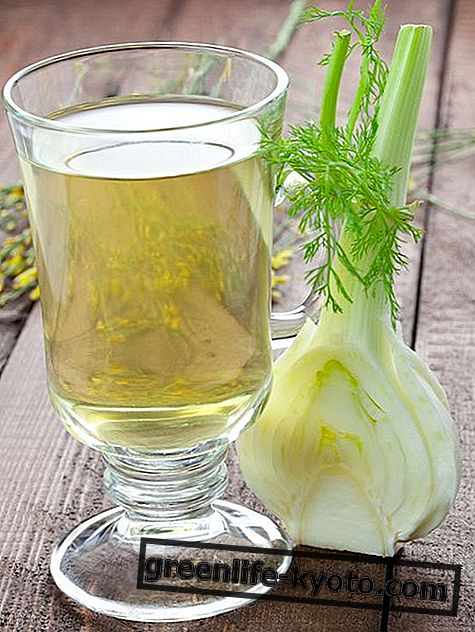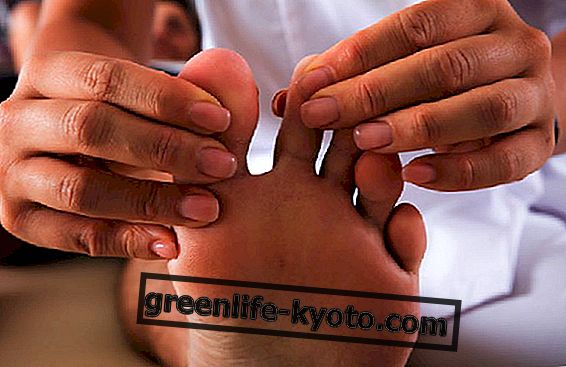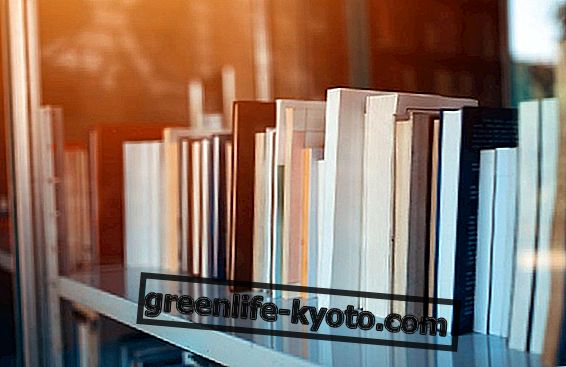
Rheumatic diseases are among the most widespread diseases in the Italian population, after cardiovascular and tumor diseases; in fact, it is estimated that 5 million patients suffer from rheumatic diseases, of which 287 thousand have different severity and evolutionary characteristics up to permanent disability (National Association for Rheumatic Diseases - ANMAR 2008); it is therefore a series of chronic and degenerative inflammatory pathologies with a great impact on morbidity and disability, so as to compromise, in many cases, the life expectancy of the affected subjects.
A recent ISTAT survey (MultiScopo 2010) on the most widespread Rheumatic Diseases in Italy, highlighted how Rheumatoid Arthritis (RA) and Arthrosis affect 17.3% of the population involved, with an increase in the prevalence of rheumatic diseases in relation to age and independent of sex. In particular, the study found that RA is a pathology that has a prevalence in the female sex of 22.1%, against 12.1% of male sex, with the same trend as osteoporosis (12% against 1%) . Therefore, Rheumatoid Arthritis plays a prominent role in degenerative inflammatory pathologies affecting the joints, its spread in the Italian population is, in fact, estimated at around 38.8% (ISTAT 2009).
AR is the most common form of inflammatory arthritis, it is classified among the autoimmune disease with an as yet undefined etiology and is characterized by an erosive symmetrical arthritis, with frequent involvement of extra-articular districts. In most cases, the disease is characterized by a chronic course with exacerbations and remissions, which leads to a progressive destruction of the affected joints, with deformity and loss of function, which often leads to disability, with a consequent reduction in expectations of patient's life. Numerous international epidemiological studies on RA report, depending on the breed, sex and characteristics of the data collected, prevalence values ranging from 0.33% to 6.8% and an incidence from 12 to 1200 per 100, 000 inhabitants .
The disease presents a prevalent interest of the female sex, twice more than the male sex up to the average age, and then decreases with advancing age, while in the male incidence tends to increase with age. The onset of the disease is between 20 and 50 years of age, however the incidence in women between 60 and 64 years is six times greater, compared to that of younger subjects. There is also a juvenile form of the disease that can affect children and young people under the age of 16. Women are generally more affected than men with a ratio of 3 to 1, probably due to a stimulatory effect on the immune system of estrogen hormones .
According to data from the World Health Organization ( WHO ) the prevalence of AR in the world is estimated between 0.3 and 1%, with a greater presence among women and in rich and industrialized countries, while as regards Osteoarthritis prevalence stood at 9.6% in men and 18% in women over 60 years (WHO 2003).
In Italy the number of AR patients is around 400, 000, of which 5, 000 are the patients with the severe form of the disease; the prevalence, according to various studies, is estimated between 0.3-0.6% of the total ; the pathology also presents a variability of clinical expressions, which often have a negative impact on the lives of patients, it was, in fact, calculated that about 80% of subjects, 20 years after the onset of the disease, presents from one to more degrees of disability or undergoes a series of comorbidities such as: cardiovascular disease, infections, neoplasms, gastrointestinal pathologies and osteoporosis, which affect the work of affected individuals in various ways.
This invalidity at work represents a large social cost calculated, from a sector study, in 23 million workdays lost, with an expenditure of over 2 billion euros by the NHS (ANMAR 2008).
The AR represents, therefore, an important clinical problem in the field of rheumatic diseases both for Western Medicine, given the high toxicity of the drugs still used for the treatment, even if new types of biological drugs, less invasive, but much expensive, they begin to be available for treatment; both for Traditional Chinese Medicine ( TCM ), where a corresponding clinical syndrome is not present, but which classifies AR in the group of bi Syndromes, ie in obstructive pain syndromes, chronic and progressive, resistant to treatments, in which one Xiè Qi or pathogenic noxa such as cold, heat, humidity and wind "penetrates deeply causing an alteration of the harmonic flow of Qi energy and Xue blood in the meridians".
From the physiopathological point of view, people with RA have numerous alterations in the immune response, even on a genetic basis, that is, they have the " genetic soil" that represents the predisposition to illness, this can be represented by:
1. An abnormal activation of lymphocyte cells (T-Helper) in the synovial membrane at the joint level and therefore of the immune response (antigen-antibody) with formation of auto-antibodies at the synovial level.
2. Abnormalities of the endocrine system : such as the reduced level of testosterone in male subjects with RA, or the improvement of the pathological conditions of RA in about 75%, of women during pregnancy.
3. To which must be added non-genetic factors such as age, smoking exposure, dietary factors and infectious agents ( Parvovirus, Rosolia, Epstein_Barr, Borrelia ), which can act as factors triggering the disease, because they increase / alter the immune response, " primum movens" of the RA.
The hypothesized pathogenetic mechanism, in fact, provides that the altered immune response leads to an inflammation of the synovial membrane with cellular proliferation and formation of the synovial cloth, rich in proteolytic enzymes, which comes to affect the articular cartilage destroying it, to this follows the osteoclastic activation of osteocytes, which leads to the destruction of the bone itself . Periarticular structures (tendons, ligaments, joint capsule) are also involved in this inflammatory joint process, with consequent articular alterations, followed by deformities and ankyloses secondary to bone remodeling processes .
An interpretation of the pathogenetic factors of RA is also possible in MTC, in fact, there is a close correlation between the clear prevalence of the disease in the female adult gender, between 40 and 50 years and the energy decline of the Renal Lodge and therefore, of the ' organ or zang Rene with all its many functions (proper and reproductive renal), this decline becomes rapid and overt, especially in women in that age group; while familiarity, understood as a peculiarity of the HLA system in TCM can be defined as a constitutional component of the subject that leads him to get sick. Also many of the factors favoring / triggering this autoimmune pathology from the Western point of view such as: physical and emotional stress, previous infections, environmental pollution etc., in Traditional Chinese Medicine are identified as factors that go to weaken the defensive Qi or defensive energy of individual, thus increasing the person's vulnerability.
The first symptom of the slowing down and then the obstruction of the free flow of energy or of Qi and blood ( xuè) in the meridians is the evolutionary joint pain (pain) , which affects the joints; while an obstacle to the circulation of the blood causes an altered nourishment of the muscles, tendons and the joints themselves . In the later and overt phase of the RA the signs of Humidity are predominant, as there is stagnation of energy and formation of Tan : the joints appear in fact, swollen due to the presence of effusion, there is edema of the soft parts and fixed pain, deep and gravitational, with limited movement in the morning .
The signs of Heat, on the other hand, appear at the end of the pathogenic noxa ( external perverse energy ), thus appear reddening ( rubor ) and increase in temperature ( calor ) of the joints involved, accompanied or not by fever in the preceding phase onset of the disease, with alteration of blood chemistry parameters (leukocytosis and increase in ESR and PCR). The condensation of humidity caused by the heat that is created, in turn causes an accumulation of mucoproteins and immune complexes, which infiltrating the synovial membrane spread to the inflammatory fluid, producing a condition of Flegma that is increasingly difficult to solve.
The presence of pain and above all of its characteristic variations, due to the macro-microclimate, confirm the pathogenetic link with the main external perverted energy factor, that is the external Wind, which guides other pathogenic factors such as cold and humidity, associated within the body in the presence of a weakening in the " space between the skin and the muscles ", called in MTC Cou li, that is the space where the defensive Qi circulates, which protects the organism from external pathogenic factors.
Rheumatoid arthritis may present particular and different onset characteristics in the various subjects affected. Each patient therefore presents " his disease ", characterized by a phase of exacerbations followed by periods of remission . However, it is possible to describe the main symptoms and common signs of the disease:
In the early stage of disease onset we will have:
to. swelling with bilateral and symmetrical pain of small joints: hands, wrists, elbows, knees, feet b. shoulder, ankle and neck involvement (later)
b. morning awakening stiffness, prolonged duration with reduced movement
c. fever, malaise and asthenia (frequent).
In the most advanced phases of RA, in addition to the symptoms described above, may appear:
to. flexion contractures and joint deformity features :
- " boutonniere " deformity of the proximal inter-phalangeal joint;
- " swan neck " deformity due to hyper-extension of the inter-phalangeal joint with flexion;
b. involvement of extra-articular organs and systems such as: cutaneous rheumatoid nodules; nodular pulmonary interstitial disease and pneumonia; pathologies affecting the eye; neurites and peripheral nerve compression syndromes (Carpal tunnel syndrome); vasculitis, myocarditis, pericarditis or heart conduction defects; anemia, thrombocytopenia, eosinophilia and other blood disorders; glomerulus nephritis and other diseases affecting the kidney.
The classical diagnosis of RA is based on the following criteria (American College Rheumatology 2002): 1. Articular morning stiffness of at least 1 hour before maximum improvement.
2. Arthritis of three or more joint areas observed by a doctor.
3. Arthritis of at least one of the hand joints : wrists, metacarpophalangeal, proximal inter-phalangeal
4. Symmetrical arthritis : involvement of the same articular areas on both sides of the body.
5. Rheumatoid nodules: ie subcutaneous nodules at the level of the bony prominences involved.
6. Serum rheumatoid factor : presence of rheumatoid factor in the blood significantly .
7. Typical radiological changes : juxta-articular erosions or osteoporosis, that is, more pronounced near the joints involved.
NB: The signs and symptoms 1 to 4 must have been present for at least 6 weeks.
In MTC a classification of RA is not easy to approach, in fact, assuming to consider the aspect related to the pathogenic factor in question the AR could fall into:
- a humid-cold Wind Syndrome which undergoes a transformation into heat due to an internal predisposition of the organism (HLA-rene system)
- or be referable to liver stasis due to emotions .
According to the classification based on the alteration of the tissues that occur in the AR, the progressive deformation of the joints visible first to the RX, then as an objective element ("swan neck" deformation), indicate the compromised tendons and bones which in MTC detecting a disharmony at the level of Liver and Kidney .
Furthermore, acupuncture as an energy medicine tends to evaluate AR, as well as many other pathologies, from the point of view of the type of void or full of energy that has been created, specifically in RA, the appearance of eroded joint tissues, the presence of osteoporosis and the thinning of the tendons lay down for a picture of emptiness, but the presence of tendinos in life, in addition to the fibrous and osseous transformation of reactive tissues, which are evident in the subsequent phases, cause deposition instead for a picture of the Full, a complex picture of Void-Full is thus determined by reason of the phase of the illness, of not easy approach.
According to Traditional Chinese Medicine ( TCM ), in fact, autoimmune rheumatic diseases and rheumatoid arthritis ( AR ) in particular, can more generally fall within the obstructive energy circulation syndromes or Bi (bizheng) syndromes and therefore are classified among the Bi Calore and Bi Tenace . Let's see them briefly:
Bi Calore is an acute phase of phlogosis, it originates from a persistence of an external pathogenic factor (Wind, Cold, Humidity), favored by a Yin Void. It is characterized by intense joint pain with signs of inflammation: redness, heat and swelling ( rubor, calor, dolor of the Latins). Pain is attenuated characteristically during the day and increases at night. At the systemic level there are signs of Heat and injury of Organic Liquids.
Bi Tenace is the evolution of the previous phase and has a chronic and invalidating course . Persistent obstruction of the joints causes the retention of liquids in the body that turn into phlegm, further obstructing the joints and the energy circulation of the meridians themselves. This results in muscular hypotrophy, swelling and deformation of the bones, violet color of the periarticular zones with violent pain, fixed with impossibility to the extension flexion. At this level the disease does not just affect muscles, joints and meridians, but can deepen and reach the organs / viscera (zang / fu), with consequent symptoms .
An important factor in the development of the syndrome is the Liver and Kidney Void that aggravates the Stasis of Qi and Blood and this damages the joint nutrition. Also because the Blood of the Liver nourishes the tendons and when it is in Vacuum the tendons are no longer fed, this causes pain and stiffness in the joints . The kidneys feed the bones and when they are empty they cause hypotension which aggravates the damage and creates an endless vicious circle.
Acupuncture therapy in these cases involves the use of main points and symptomatic points according to the type of Bi Calore or Tenace of which it is concerned.
In the Bi Calore, in addition to dispersing the Heat, it is necessary to eliminate the Wind and tone up the Blood. The main acupoints, to be treated in dispersion, will be: 4LI, 11LI, 43ST, 14GV 10SP, 2LR. Symptomatic acupoints, on the other hand, will be chosen in relation to the joint involved and can be summarized as follows:
Cervical region
- distal points: 39GB 3SI 5TE 8TE 60BL
- local points: 10BL 20GB
Wrist
- distal points: 36ST 5SP 40GB
- local points: 4TE 5LI 5SI 4SI
Fingers
- local points: 3TE 3LI BAXIE
Lumbar
- distal points: 40 60 59 62 BL
- local points: 23 26 25 24BL 3GV
Sacred
- distal points: 40 58 BL
- local points: 27 28 32 BL
Hip
- distal points: 40 58 BL
- local points: 27 28 32 BL
Knee
- distal points: 5SP 5SI
- local points: 36ST 9SP 7-8LR
Ankle
- local points: 5SP 40GB 41ST 6OB
Temporo-mandibular joint
- distal point: 2 LI
- local point: 7ST
Toes
- distal points: 4LI
- local points: 3SP and Extra Bafeng points (19FM)
Elbow
- distal points: 4LI 5TE 1LI
- local points: 11LI 10TE 8SI
In the Bi Tenace can be used as main points: 39GB and 5TB, 3KI and 3LR in addition to the same symptomatic acupoints previously described.
In the more severe forms characterized by deformity, ankylosis and muscular atrophy, it is advisable to use a particular acupuncture scheme that provides for the stimulation of the yuan point of the affected meridian in tonification and of the luo point of the meridian coupled in dispersion.
When the damaging action is much more massive there will be a diffusion in depth of the disease with involvement and involvement of organs and viscera with the respective pictures of:
- BI of the Lung
- BI of the Spleen
- BI of the Liver
- BI del Rene
- BI del Cuore
Each of which has distinctive distinctive features and different acupuncture treatments based on the identification of prevaricating energy in that particular situation and the involvement of one or more forces based on the classic Law of 5 Movements : Air - Water - Wood - Fire - Earth . The movements that are most often affected are the Loggia dell'Acqua which " holds the bones ", that of the Wood that " regulates the tendons " and that of the Earth that governs " muscles like flesh, connective and the synovium" and consequently "the joints ” . In cases where particularly aggressive pathological forms are present, such as vasculitis in the course of SLE or AR, autoimmune thyroiditis, etc., the involvement of the Loggia del Fuoco also appears evident .
The AR is, at the end of this brief excursus, a chronic and evolutionary autoimmune pathology with complex pathogenesis, subject, therefore, to complex therapies in order to obtain a good therapeutic result. Acupuncture as an energy medicine can give good results both on pain and on the prevention of the possible debilitating evolution of this pathology, but in its application it is necessary to take into account that acupuncture therapy must go well beyond the standardized application of a series, although well studied, of acupoints. In this medical branch, therefore, as in many other branches of Complementary Medicine, it is more than ever necessary to individualize the therapy adapting it to the individual patient, thus applying a non-generic acupuncture scheme, but as close as possible to the " characteristics " of the sick subject and to the "disease that develops in that subject", considering, that is, at the same time the constitutive characteristics of the patient and the evolutionary stage of the disease itself.
Bibliography
American College of Rheumatology subcommitte on Rheumatoid Arthritis Guidelines. Guidelines for the Managemenmt of Rheumatoid Arthritis. 2002 Update. Artritis Rheum 2002; 46: 328-46.
Cimmino MA, Parisi M, Moggiana G et Al .: " Prevalence of rheumatoid arthritis in Italy: the Chiavari study ". Ann. Rheum. Dis. 1998; 57: 315-8
De Waure C., Sferrazza A. et Al .: Epidemiology and burden of disease of Rheumatoid Arthritis . IJPH-year 8, vol.7, n.2, suppl.2, 2010
Ding L .: Acupuncture. Meridian theory and acupuncture points, Ed. Foregein Linguages Press, Beijing, 1991.
Giullaume G., Chieu M .: Dictionaire des points en rhumathologie, Ed, Guy Trèdaniel, Paris, 1999 Maciocia G .: The Clinic in Chinese Medicine, Ed. CEA, Milan, 1995.
Tedesco F., Gambari PF: Rheumatic Diseases, 3rd Ed., Ed. Mc Graw-Hill, Milan, 2002
Sowen: Acupuncture and Traditional Chinese Medicine Lessons, Milan 2013
Vandermeersch I., Pei-Lin S .: Bi Syndromes Or Rheumatic Disorders Treated By TCM, Ed. SATAS, Brussels, 2001.
